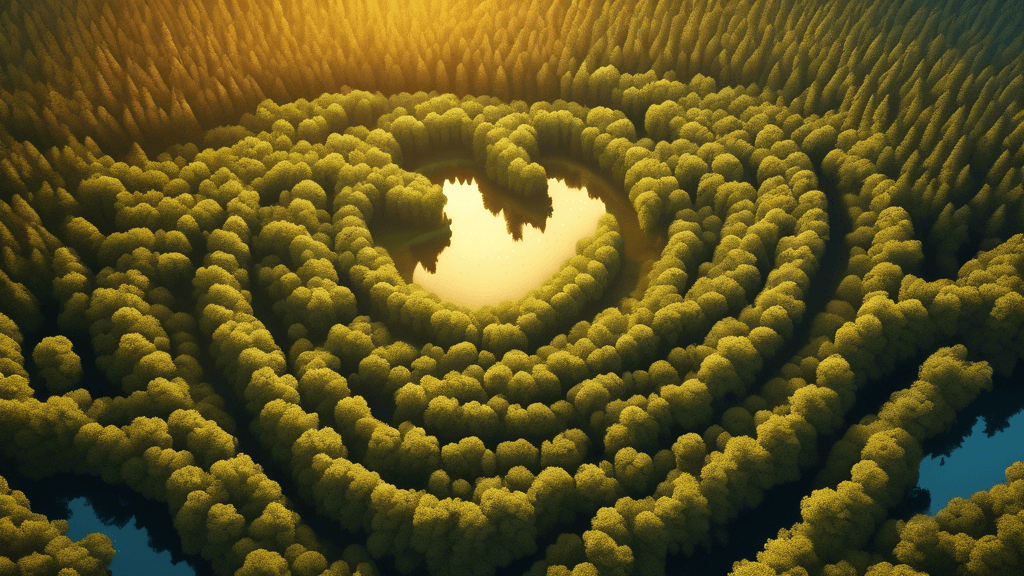
Capturing Nature's Geometry: Patterns and Shapes in Landscape Photography
Share
The Allure of Patterns and Shapes in Landscape Photography
Landscape photography transcends mere capturing of expansive vistas and dramatic horizons. At its core, it's about interpreting the natural world through the shapes and patterns that repeat rhythmically within the environment. But why exactly should budding photographers pay attention to these elements? What does the deliberate framing of these patterns offer to both the artist and the viewer?
Unlocking the Visual Power of Patterns
Patterns in nature are not just random arrangements; they are a visual representation of the underlying mathematical and biological principles that govern the growth and decay in nature. From the Fibonacci spiral seen in the arrangement of leaves and shells to the fractal geometry of ferns and mountains, patterns can transform a simple landscape photo into a profound visual experience.
How Can Photographers Harness These Natural Designs?
To truly capture the essence of nature’s geometry, photographers must develop an eye for detail and a deep appreciation for their surroundings. Recognizing and using these natural forms in photography not only enhances the aesthetic appeal of images but can also steer viewers towards a deeper understanding of the natural world.
- Observation: The first step is to actively observe your environment. Spend time in nature without your camera. Look at the way leaves are arranged on a branch, or how the river weaves through the landscape.
- Composition: Once you've identified a pattern, think about how you can frame it. Consider the rule of thirds, leading lines, and symmetry to guide the viewer's eye through the picture.
- Light: The interplay of light and shadow can either define or obscure the patterns in your landscape. Choosing the right time of day is crucial, as the angle of the sun can dramatically alter how a pattern appears.
- Scale: Sometimes, capturing the pattern requires you to either zoom in to a small detail or zoom out for a wider perspective. Both approaches offer different interpretations of the pattern's role within the larger landscape.
Examples of Patterns in Landscape Photography
Let’s delve into some specific examples where patterns and shapes dominate the landscape:
- Rippled Sand Dunes: The undulating shapes of sand dunes, especially in desert landscapes, offer rhythmic beauty that is both subtle and dramatic. The ripples formed by wind forces create a texture that is wonderfully captured during the golden hours of sunrise and sunset, when shadows deepen the contours.
- Mountain Ranges: Rows of mountains or ridges can form leading lines that draw the viewer’s eye into the depth of the photograph. The repeated peaks and valleys can also highlight the enormity and the rugged texture of mountain landscapes.
- Forest Scenery: The repetition of tree trunks provides a vertical pattern that can evoke a sense of order and tranquility. In a densely packed forest, this pattern can lead to a beautiful play of light and shadow, highlighting the 'path' less traveled by.
What Do Experts Say?
Renowned landscape photographer Ansel Adams once said, Patterns can be as comforting as a solid rock in a turbulent sea. This quote encapsulates the essence of incorporating geometric elements into landscape photography—it provides a visual anchor, a sense of stability in the chaotic beauty of nature.
Environmental photographer James Balog also shares, Patterns connect us to what is essential, reminding us of the natural network we are part of. This sentiment highlights the educational aspect of landscape photography, where patterns serve as conduits to a greater environmental consciousness and appreciation.
Final Thoughts and Call to Action
Observing and capturing the intricate patterns and shapes in landscape photography is more than just an artistic endeavor—it’s a dialogue with nature that encourages us to look closer and deeper into the environment we often take for granted. Whether you are a professional photographer or an amateur enthusiast, embracing these elements can profoundly affect your work and how it communicates.
Why not grab your camera, step outside, and let the patterns of nature inspire you? Every landscape holds a story, and through your lens, you have the power to tell it. Share your experiences and insights with the community; we all grow stronger through collective learning and discovery.





